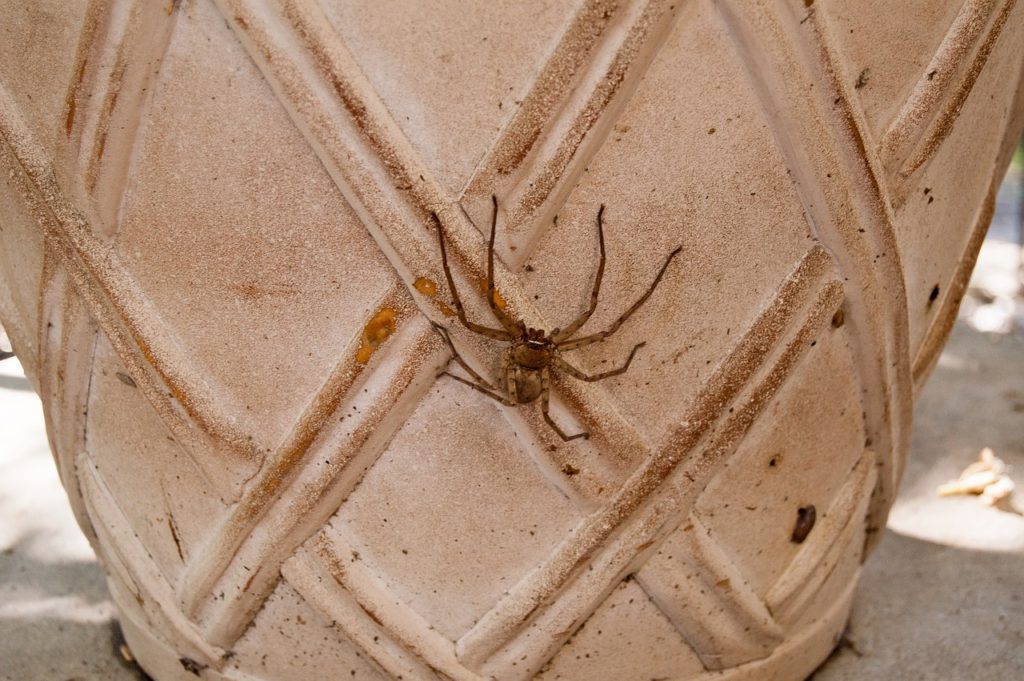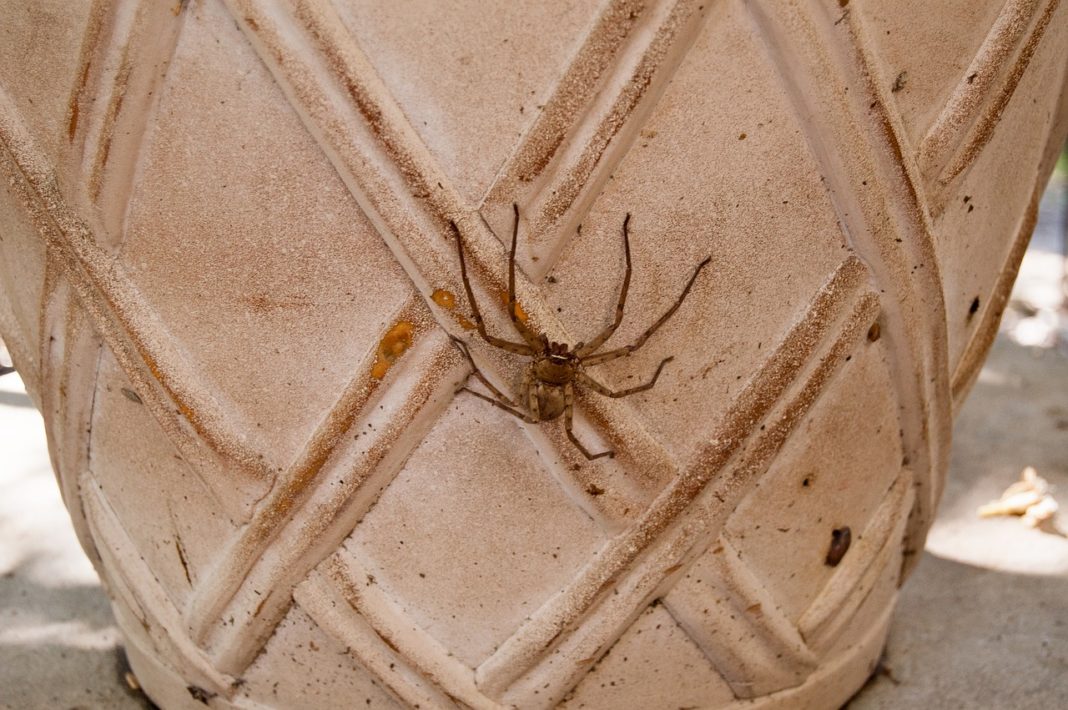Peter Jäger, head of the arachnology department at the Senckenberg Research Institute in Frankfurt, Germany, discovered the giant huntsman in a cave in Laos in 2001, according to his research published in the journal Zoosystema. Only a few people in the world have seen this behemoth arachnid.
The colouration is yellowish-brown with several irregularly distributed dark spots on the rear half. The legs have wide dark bands before the first bend. Like all huntsman spiders, the legs of the giant huntsman spider are long compared to the body, and twist forward in a crab-like fashion.
 On males, the cymbium is at least three times longer than the tegulum. The female is distinguished by a characteristically shaped epigyneal field with two anterior directed bands, and the course of their internal ducts. The giant huntsman spider is the largest member of the family Sparassidae, boasting a 30 cm (12 in) leg-span, and 4.6 cm (1.8 in) body-length.
On males, the cymbium is at least three times longer than the tegulum. The female is distinguished by a characteristically shaped epigyneal field with two anterior directed bands, and the course of their internal ducts. The giant huntsman spider is the largest member of the family Sparassidae, boasting a 30 cm (12 in) leg-span, and 4.6 cm (1.8 in) body-length.
The giant hunter spider is found in Laos and is thought to be a burrowing species because of its pale color, long legs, and distinctive hair on the male’s second leg. There was no obvious reduction in eyes, possibly because the species lived near cave entrances. They can move at speeds up to 1m/s. Like the Black Widow spider, the female also eats the male during mating.
According to Wikipedia and livescience.com












